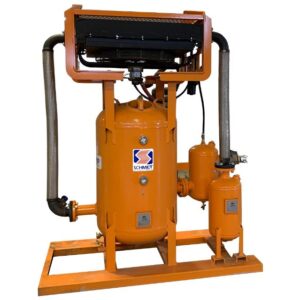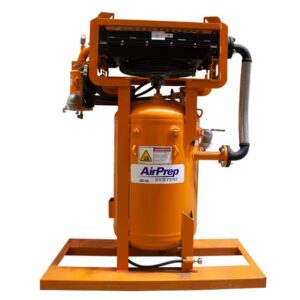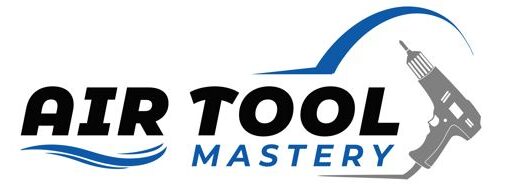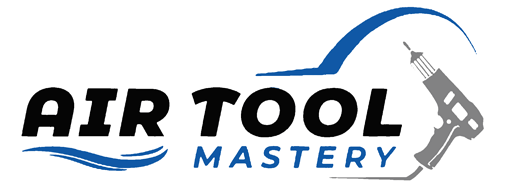Moisture shields and aftercoolers play a pivotal role in maintaining the efficiency and longevity of compressed air pipe systems. Moisture shields are designed to prevent the condensation of water vapor within compressed air systems, a common issue that can lead to corrosion, equipment failure, and decreased productivity.
On the other hand, aftercoolers are a type of heat exchanger that cools compressed air to a manageable temperature, eliminating excessive heat and further reducing the moisture content. This introductory examination will delve into the intricacies of these two components, emphasizing their functionalities, importance, and the implications of their use in compressed air pipe systems.
Understanding Moisture Shields
Moisture Shields, as their name suggests, are designed to shield and protect the components of a compressed air system from moisture. These shields work by establishing a physical barrier that prevents water vapor from condensing within the system. The main purpose of these shields is to mitigate any potential damage caused by water condensation, such as corrosion, equipment failure, and decreased productivity.
The operation of moisture shields in compressed air systems is rather straightforward. As compressed air travels through the system, it heats up, causing any inherent water vapor to condensate. Moisture shields intercept this process, preventing the condensing water vapor from coming into contact with the system’s components.
The importance of moisture shields in the maintenance of compressed air pipes cannot be overstated. By preventing moisture buildup, these shields help maintain the optimal performance of the system, prolong the lifespan of its components, and prevent costly repairs or replacements due to corrosion or failure. Overall, moisture shields are a critical asset in preserving the efficiency and functionality of compressed air pipe systems.
What Are Moisture Shields Made of?
Moisture shields can be made of a variety of materials, including stainless steel, aluminum, and various types of plastics. The material used will depend on the specific application and the level of moisture protection required.
Some moisture shields may also have additional features such as pressure gauges or automatic drains to aid in monitoring and maintenance.
Types of Moisture Shields
There are several types of moisture shields available in the market, each with its own unique features and advantages. The most common types include:
Silica Gel Desiccant Shields
These moisture shields contain silica gel desiccant beads that absorb any water vapor present in the compressed air, effectively reducing the dew point temperature.
Coalescing Filters
These filters work by separating water droplets from the compressed air stream, subsequently draining them out of the system.
Refrigerated Dryers
These shields use a refrigeration system to cool down the compressed air, causing any moisture present to condensate and drain out of the system.
Choosing the Right Moisture Shield for Your System

When selecting a moisture shield for your compressed air pipe system, it is essential to consider factors such as:
1. The Level of Moisture in the Environment
If your system operates in a high humidity environment, you may need to choose a moisture shield with higher moisture removal capabilities.
2. The Size and Pressure of Your System
Larger systems with higher pressure levels may require more robust moisture shields that can handle greater amounts of moisture.
3. Maintenance Requirements
Some moisture shields require more frequent maintenance than others, so it is essential to consider the level of maintenance your team can handle.
4. Cost and Energy Efficiency
Different types of moisture shields come at varying costs, and it is important to find one that fits your budget while still maintaining energy efficiency.
Understanding Aftercoolers
Aftercoolers are another fundamental component of a compressed air system. Their primary purpose is to cool down the compressed air, which is typically heated during the compression process. By reducing the air temperature, aftercoolers not only manage the heat but also facilitate the condensation of water vapor, thus aiding in moisture removal.
The functionality of aftercoolers in compressed air systems is of paramount importance. As compressed air leaves the compressor, it carries with it substantial heat and moisture. The aftercooler steps in at this juncture, cooling the air and causing much of the water vapor to condense into liquid form. This condensed water can then be collected and removed from the system, thereby reducing the overall moisture content in the air.
The role of aftercoolers in maintaining and improving the performance and lifespan of compressed air pipes is significant. By facilitating the removal of excess heat and moisture, aftercoolers contribute to the reduction of wear and tear on the system’s components.
This, in turn, can help prolong the system’s lifespan, increase its efficiency, and reduce the likelihood of expensive repairs or replacements. In essence, aftercoolers are instrumental in ensuring the reliability and longevity of compressed air pipe systems.
Types of Aftercoolers
There are two main types of aftercoolers commonly used in compressed air systems; air-cooled and water-cooled. Air-cooled aftercoolers, as the name suggests, make use of ambient air to cool down the compressed air, while water-cooled aftercoolers circulate water through a heat exchanger to achieve the same result.
Both types have their own advantages and disadvantages. Air-cooled aftercoolers are typically more compact, easier to install and maintain, and do not require a constant water supply. However, they may be less effective in high ambient temperatures or when dealing with high levels of moisture in the compressed air.
On the other hand, water-cooled aftercoolers can handle higher temperatures and moisture levels without sacrificing efficiency. However, they require a constant water supply and may be more complex to install and maintain.
Choosing the Right Aftercooler
When selecting an aftercooler for a compressed air system, factors such as ambient temperature, moisture levels, available space, and budget must be taken into consideration. It is essential to choose an aftercooler that is suitable for the specific conditions and requirements of the system to ensure maximum efficiency and longevity.
Additionally, it is important to regularly inspect and maintain aftercoolers to ensure they are functioning properly. This includes checking for leaks, cleaning or replacing filters, and monitoring temperature and pressure levels.
Tips for Maintaining an Aftercooler

- Keep the aftercooler clean and free of debris to ensure optimal heat exchange.
- Regularly inspect for any signs of leaks or damage.
- Monitor temperature and pressure levels to identify any potential issues.
- Replace filters as needed according to manufacturer’s recommendations.
- Ensure a constant water supply for water-cooled aftercoolers.
The Impact of Moisture and Temperature in Compressed Air Systems
The efficiency of compressed air pipe systems is heavily influenced by two main factors: moisture and temperature. Moisture that accumulates in the system can cause corrosion, leading to leaks and pressure drops that hamper system efficiency. Water in the compressed air can also damage end-use instruments, resulting in costly repairs and downtime.
Temperature, on the other hand, plays a vital role in the effectiveness of compression and the capacity of air to hold moisture. Higher temperatures increase the air’s ability to retain water vapor, which condenses into liquid water when the air is cooled in the aftercooler. Additionally, high temperatures can cause thermal expansion in pipework, leading to potential damage or leaks.
Impact of Proper Use of Moisture Shields and Aftercoolers
Consider the case of an automotive manufacturing plant that relies heavily on compressed air for various operations, including painting, sandblasting, and the operation of pneumatic tools. Initially, the plant is experiencing frequent equipment breakdowns and poor paint finishes, which is traced back to moisture contamination in the compressed air system. This is causing corrosion within the system, leading to leaks and pressure drops, and the moisture in the air is adversely affecting the paint finishes on the vehicles.
After realizing the root cause of the problem, the plant installs a high-quality moisture shield and aftercooler in their compressed air system. The results are immediate and impactful. The moisture guard effectively prevented water from entering the system, thereby reducing corrosion and leakages. The aftercooler, on the other hand, helped lower the temperature of the compressed air, reducing the amount of moisture it could hold, and minimizing the chances of condensation.
Following these upgrades, the plant sees a significant reduction in equipment breakdowns, an improvement in the quality of the vehicle paint finishes, and a noteworthy increase in overall operational efficiency. This example, thus, highlights the profound impact of properly implemented moisture shields and aftercoolers on the performance and longevity of compressed air systems.
Maintenance Tips
Regular maintenance of moisture shields and aftercoolers is essential to ensure the optimal performance and longevity of your compressed air system.
- Inspect regularly: At least once a month, visually inspect your moisture shields and aftercoolers for signs of wear and tear, corrosion, or blockages.
- Clean frequently: Dust, debris, or rust can accumulate and clog your moisture shields and aftercoolers. Regular cleaning helps maintain their efficiency.
- Replace components as needed: Over time, certain components might deteriorate. Keep track of their condition and replace them as necessary.
Common Issues and Their Fixes
- Blockages: If you notice a decrease in the system’s performance, it might be due to a blockage in the moisture shield or aftercooler. To fix this, disassemble the components and thoroughly clean them.
- Corrosion: Should you detect signs of corrosion, it’s crucial to address it immediately. Left untreated, corrosion can lead to leaks, pressure drops, and ultimately system failure. Depending on the severity, it may be necessary to replace the corroded parts.
Conclusion
Properly installed and maintained moisture shields and aftercoolers play a crucial role in the performance and longevity of compressed air systems. Regular inspections, cleanings, and component replacements can help prevent issues and keep your system running smoothly. By following these maintenance tips, you can ensure that your compressed air system operates at its full potential, leading to improved operational efficiency and cost savings in the long run. Remember, prevention is always better than having to deal with costly repairs or replacements in the future. Keep your moisture shields and aftercoolers in top condition, and you’ll see the benefits in your compressed air system’s performance.

